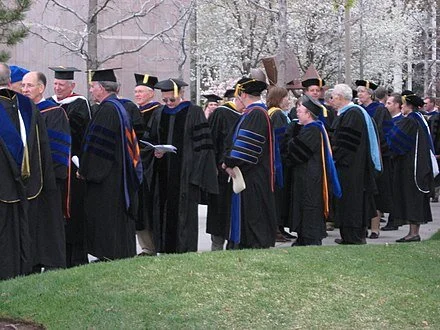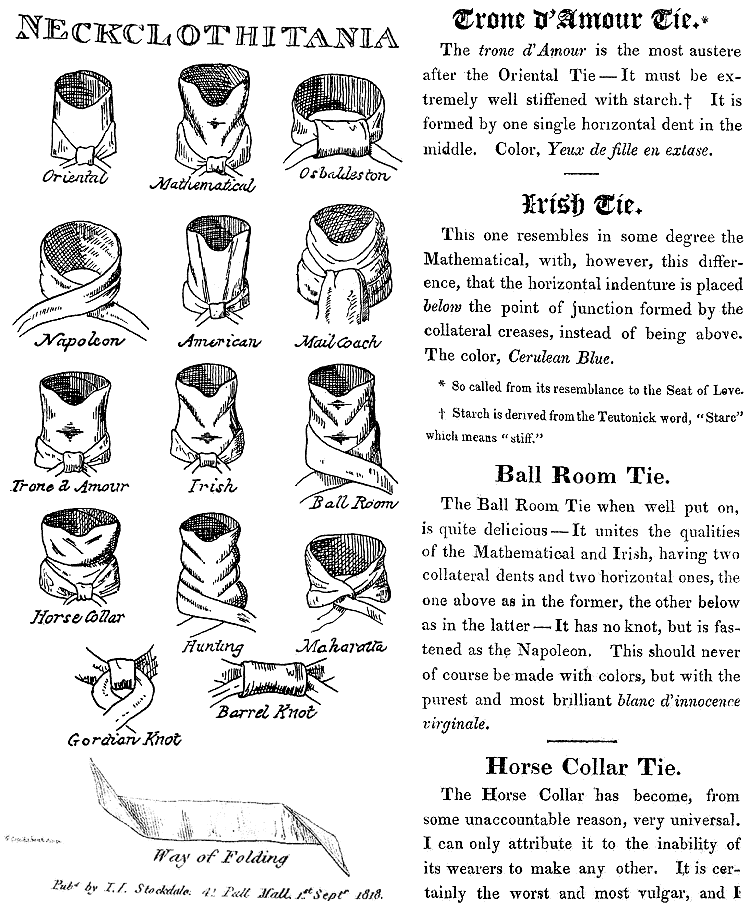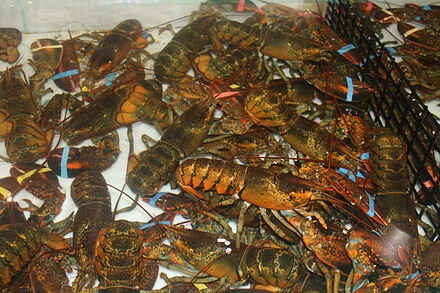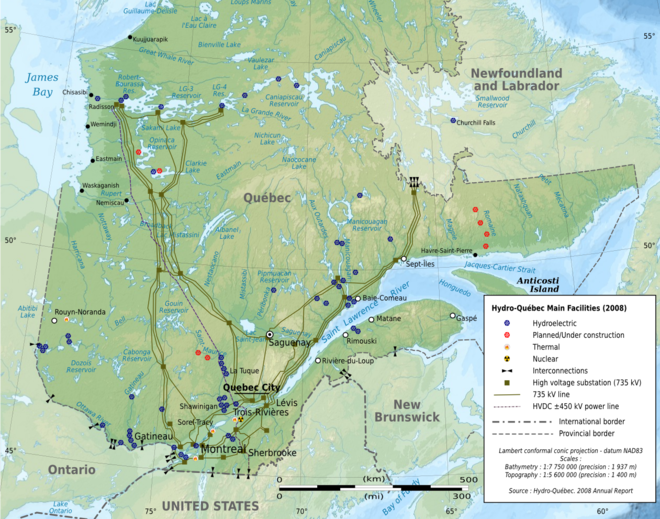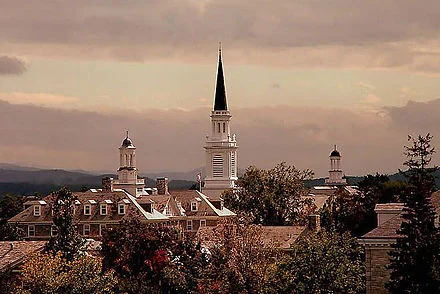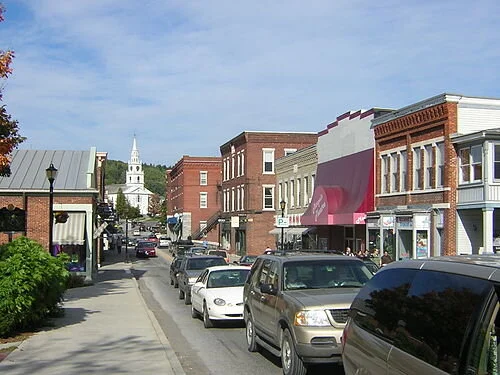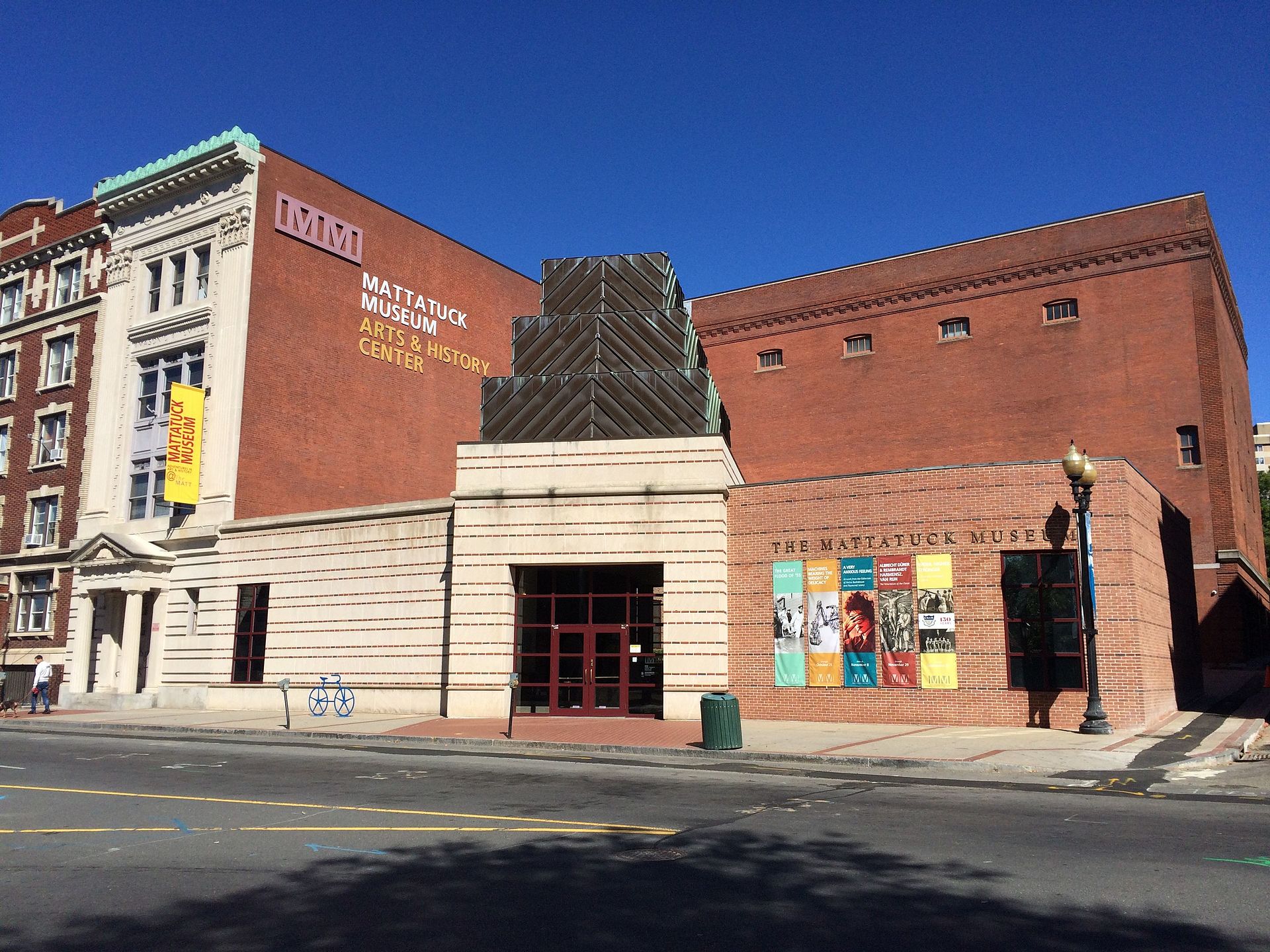
Chris Powell: Close down the ‘doctor’ racket; when beggars die
MANCHESTER, Conn.
Legions of the politically correct are insisting that President-elect Joe Biden's wife, Jill, be given the honorific title "Doctor" because she holds a doctoral degree in education, which she received largely on the basis of a mediocre term paper. Objections to her honorific are being denounced as sexist and anti-intellectual, an insult to all women with doctoral degrees, as if men haven't gotten such degrees and claimed the title too, and as if all doctorates signify learning and service commanding special respect.
But journalistic style long has been to confer "doctor" only on those holding degrees in medicine and dentistry, and the reason for this was hilariously demonstrated last March, when television show hostess Whoopi Goldberg remarked on The View that she hoped that if Joe Biden were elected president he would appoint his wife surgeon general.
“She's a hell of a doctor," Goldberg said. "She's an amazing doctor.”
Of course, Mrs. Biden has no more qualifications to practice medicine than Goldberg has to pontificate on TV while advertising her ignorance.
The problem is that people generally associate "doctor" with medical authority, so conferring the title on those with other degrees causes misunderstanding.
But with the explosion of what likes to call itself higher education there are now millions of people around the world with non-medical doctorates who like to style themselves "Doctor" to pose or intimidate, though their usefulness may be less than that of elevator operators and lamplighters.
The higher-education industry long has thrived on this pretension, though elements of the working class quickly caught on to it, as was indicated by an episode of the Dobie Gillis television show in the early 1960s.
Having advanced from high school to junior college, Dobie tells his skeptical father, a grocer, why a certain professor is so great: because he has a doctorate, a Ph.D.
Dobie's father asks: "What kind of doctor is that?"
Dobie explains: "You know, Dad -- a doctor of philosophy."
Dobie's father knowingly replies: "Oh, yeah -- the kind that don't do nobody no good."
Back in the days of Dobie Gillis a Connecticut educator of working-class origin, an Army veteran of combat in World War II who never would have gotten to college without the GI Bill, became a Ph.D himself and sought to democratize higher education for the working class. He had seen the "doctor" racket up close and he was not too pompous to acknowledge it. He said that the title was most useful for getting restaurant reservations. He was my father, Theodore Powell.
(Editor’s note: Here’s Theodore Powell’s obit.)
xxx
When beggars die there are no comets seen.
The heavens themselves blaze forth the death of princes.
As it was in Julius Caesar's time and Shakespeare's, it remains today in Connecticut.
Last week Devon Dalio -- eldest son of Connecticut's richest resident, investment-fund manager, Ray Dalio -- was killed in a car crash in Greenwich and it became international news. Gov. Ned Lamont issued a statement mourning the loss, since Ray Dalio and his wife, Barbara, are prominent philanthropists and his neighbors in Greenwich.
Three days later the Connecticut Post reported that four young men had been shot at a bar in Bridgeport, two of them fatally. In Waterbury the Republican-American reported that shootings in that city have more than tripled this year and people in some neighborhoods are afraid to go outside. And The Hartford Courant and (Manchester) Journal Inquirer examined the great increase in drug-overdose deaths in the state this year.
Neither the governor nor anyone else in authority issued any special lament for these losses. After all, such stuff is all normal now. Its casualties are nobodies, practically beggars, not princes.
Of course, some of this social disintegration can be attributed to the virus epidemic and the closing orders that disproportionately impoverish the working class, people less able to work from home. But this disintegration was under way in Connecticut long before the epidemic and state government has undertaken no inquiry into its causes -- and isn't likely to do so as long as the people who suffer most from it keep providing the huge pluralities that sustain the power of the oblivious, indifferent, ineffectual and self-serving.
Chris Powell is a columnist for the Journal Inquirer, in Manchester, Conn.
Those gorgeous book covers
Maine of the Sea and Pine, by Nathan Haskell Dole and Irwin Leslin Gordon; cover design likely Decorative Designers, Boston: L.C. Page & Company, 1928, printed by C. H. Simonds Company, first edition.
The Farnsworth Art Museum, in Rockland, Maine, is showing through March 21 “Transforming the Ordinary: Women in American Book Cover Design’’. It shows book covers from the 1890s-1930s — considered the heyday of book-cover design. The Art Nouveau and Arts and Crafts movements heavily influenced how artists, many of them women, created these book covers.
The sign includes a reference to the area’s granite-quarrying industry. Lime and shipbuilding were also important.
Launching a commercial sailing ship in 1900 in Rockland
Maine mazes
— Picture by Gossman75
View of the harbor in Castine, Maine, where Robert Lowell spent much time in the summer
“It was a Maine lobster town….
and below us the sea lapped
the raw little match-stick
mazes of a weir…
— From “Water,’’ by Robert Lowell (1917-1977)
The tie-loving ghost
“Last night my color-blind chain-smoking father
who has been dead for fourteen years
stepped up out of a basement tie shop
downtown and did not recognize me.’’
— From “My Father’s Neckties,’’ by Maxine Kumin (1925-2014), a U.S. poet laureate and Pulitzer Prize-winner and a Warner, N.H., horse farmer.
Statue of New Hampshire Gov. Walter Harriman in Ms. Kumin’s town of Warner, N.H.
Roger Warburton: What lobsters tell us about climate change
If present trends continue, by the end of the century, the cost of global warming could be as high as $1 billion annually for Providence County, R.I., alone, according to data from a 2017 research paper. That’s about $1,600 per person per year. Every year.
But, before we talk about the future, let’s discuss the economic damage that has already occurred in Rhode Island because of warming temperatures.
Like rich Bostonians, Rhode Island’s lobsters have moved to Maine. In 2018, Maine landed 121 million pounds of lobsters, valued at more than $491 million, and up 11 million pounds from 2017. It wasn’t always so.
Andrew Pershing, an oceanographer with the Gulf of Maine Research Institute, has noted that lobsters have migrated north as climate change warms the ocean. In Rhode Island, for instance, days when the water temperature of Narragansett Bay is 80 degrees or higher are becoming more common. From 1960 to 2015, the bay’s mean surface water temperatures rose by about 3 degrees Fahrenheit, according to research data.
A 2018 research paper Pershing co-authored said ocean temperatures have risen to levels that are favorable for lobsters off northern New England and Canada but inhospitable for them in southern New England. The research found that warming waters, ecosystem changes, and differences in conservation efforts led to the simultaneous collapse of the lobster fishery in southern New England and record-breaking landings in the Gulf of Maine.
He told Science News last year that with rocky bottoms, kelp and other things that lobsters love, climate change has turned the Gulf of Maine into a “paradise for lobsters.”
However, in the formerly strong lobster fishing grounds of Rhode Island, the situation is grim. South of Cape Cod, the lobster catch fell from a peak of about 22 million pounds in 1997 to about 3.3 million pounds in 2013, according to the 2018 paper published in Proceedings of the National Academy of Sciences.
Lobsters provide interesting lessons on the impact of the climate crisis.
A conservation program called V-notching helped protect Maine’s lobster population. “Starting a similar conservation program earlier in southern New England would have helped insulate them from the hot water they’ve experienced over the last couple of decades,” Malin Pinsky, a marine scientist with Rutgers University, told Boston.com two years ago.
Rhode Island’s lack of conservation efforts in the face of the growing climate crisis contributed to the collapse of its lobster fishery. Doing nothing or too little in the face of a changing climate can be economically devastating.
Another existing, and growing, threat to the economic health of Rhode Island comes from Lyme disease, which has increased by more than 300 percent across the Northeast since 2001. A changing climate is a big reason why. There is a growing body of evidence showing that climate change may affect the incidence and prevalence of certain vector-borne diseases such as Lyme disease, malaria, dengue, and West Nile fever, according to a 2018 study.
Chronic Lyme disease is more widespread and more serious than generally realized. There are some 20,000 cases annually in the Northeast and each averages about $4,400 in medical costs. Most Lyme disease patients who are diagnosed and treated early can fully recover. But, an estimated 10 percent to 20 percent suffer from chronically persistent and disabling symptoms. The number of such chronic cases may approach 30,000 to 60,000 annually, according to a 2018 white paper.
As the lobsters and the ticks vividly demonstrate, prevention is cheaper than cure. The longer we wait, the more painful, and expensive, the consequences will be.
The aforementioned 2017 study Estimating Economic Damage from Climate Change in the United States by world-renown economists and climate scientists projects the impact of climate change for every county in the United States. The results for Rhode Island and its neighbors are summarized in the map to the right, which depicts the estimated economic damage, in millions of dollars annually for each county in Rhode Island, Massachusetts, and Connecticut.
The data make clear that the economic damage will not be uniformly distributed. Some counties, such as Providence County, will be hit much harder than others. It also may seem that the southern counties will suffer much less. But that isn’t quite true, as graph below shows. The damage per person per year is projected to be substantial.
The total economic damage to Rhode Island, by 2080, could result in a 2 percent decline in gross domestic product (GDP). To put that in context, during the Great Recession of 2008-2010, there was only one year of GDP decline: minus 2.5 percent in 2009. By 2010, GDP had bounced back to positive growth, at 2.6 percent.
Therefore, the impact of a 2 percent hit to Rhode Island’s GDP from the climate crisis could look like the recession of 2009, only becoming permanent, continuing year after year. Also, it won’t all happen in 2080, the damage will continually get worse.
The economic damage is projected to come from more frequent and intense storms; sea-level rise; increased rainfall resulting in more flooding; higher temperatures, especially in the summer; drought that leads to lower crop yields; increased crime.
In addition, essential infrastructure will be impacted, including water supplies and water treatment facilities. Ecosystems, such as forests, rivers, lakes and wetlands, will also suffer, and that will impact human quality of life.
In the coming two weeks, we will describe how each Rhode Island county faces different levels of the above threats. As a result, each county needs to develop appropriate mitigation strategies.
The damages from the climate crisis will place major strains on public-sector budgets. However, much of the economic damage will be felt by individuals and families through poorer health, rising energy costs, increased health-care premiums, and decreased job security.
As always, prevention is cheaper, and more effective, than cure. Inaction on climate change will be the most expensive policy option.
The lobsters should teach us a valuable lesson: conservation measures based on sound scientific and economic principles could have helped mitigate losses caused by the climate crisis.
Roger Warburton, Ph.D., is a Newport ,R.I., resident. He can be reached at rdh.warburton@gmail.com.
To the rhythm of the crops
Children gathering potatoes on a large farm in Aroostook County in 1940. Back then, schools in what Mainers simply call “The County’’ did not open until the potatoes were harvested.
— Photo by Jack Delano
From Robert Whitcomb’s “Digital Diary,’’ in GoLocal24.com
Back when many Americans worked on farms (my maternal grandfather grew up on one) school calendars were adjusted to agricultural needs, especially to harvests. Thus in many school districts, young people didn’t go back to school until weeks later than they do now.
In a few places where agriculture is still paramount, special adjustments are still made. Consider Aroostook County, in northern Maine Trump Country, where (in-person!) schools open early to accommodate a break coming in late September so that the kids and teachers can help bring in the potato harvest.
I think that in general kids are now forced back to school too early, in the best part of summer – late August and early September.
Tim Faulkner: Two-way electricity trading between N.Y., New England and Quebec
A 2008 map of Hydro Quebec facilities
From ecoRI News (ecori.org)
An MIT study claims that hydropower from Quebec can provide stored energy and solve the intermittency issues afflicting wind and solar power. Researchers at the MIT Center for Energy and Environmental Policy Research illustrate how “two-way” electricity trading between New England, New York and Quebec can reduce energy-system costs, decrease natural-gas use, and limit the need for emerging technologies such as carbon capture and sequestration.
To get there, 4 gigawatts of new transmission lines must built between New England and Quebec so that existing hydropower reservoirs can send power on demand.
Meanwhile, attorneys general from Rhode Island and Massachusetts signed on to a letter in support of a 2018 rule by the Federal Energy Regulatory Commission that requires utilities to include energy storage in wholesale electricity markets. The rule is being appealed by utilities through groups such as the American Public Power Association over anticipated cost increases. The states say the rule would create billions in economic and environmental benefits.
Mayflower Wind record price
The 804-megawatt Mayflower Wind project being developed by Royal Dutch Shell and EDP Renováveis in the wind-energy zone south of Martha’s Vineyard and Nantucket was recently awarded a power-purchase contract of 5.8 cents per kilowatt-hour from the Massachusetts utilities that will be buying the electricity. The price agreement offered by Eversource, National Grid, and Unitil needs to be approved by the Massachusetts Department of Pubic Utilities.
The record low price is less than the previous low of 6.5 cents for the 800-megawatt Vineyard Wind project.
More than $70 billion of potential investments in offshore wind facilities are proposed between North Carolina and Maine, but all await the outcome of an overdue federal environmental review on the Vineyard Wind project by the federal Bureau of Ocean Energy Management.
Public comment for offshore wind
The public has until March 16 to comment on a Coast Guard proposal for the layout and navigable shipping routes for the seven leased wind areas in federal waters. The Massachusetts and Rhode Island Port Access Route Study recommends spacing of 1 nautical mile between the turbines. Developers generally favor the layout, while the commercial fishing industry prefers 4-mile transit corridors and a design that limits radar interference.
Tim Faulkner is an ecoRI News journalist.
Put big green power somewhere....?
From Robert Whitcomb’s “Digital Diary,’’ in GoLocal24.com
The continuing controversy over Central Maine Power’s plan for a $1 billion transmission line, much of it through the North Woods, from Quebec’s massive hydroelectric operations to Massachusetts customers bespeaks the usual sort of “don’t tax me, don’t tax thee, tax the man behind the tree’’.
In addition to some business and labor unions, a bunch of former state environmental officials and activists have lauded the project because it is “clean energy.’’ Other enviros, including the Sierra Club, not very convincingly complain that it would hurt the vast Maine forests. Actually, the environmental impact of this project, which, besides providing green energy, would also make New England less dependent on fluctuations in the global gas and oil market, and thus more economically secure, would be minor once it’s built though construction can be messy.
The Portland Press Herald reported: “Mainers for Clean Energy Jobs – which comprises individuals, businesses, labor unions and trade associations backing the proposal to link hydroelectric power generated in Canada with customers in Massachusetts – announced on Monday a statement of support from a group that includes former commissioners of the Maine Department of Conservation, two former executive directors of the Natural Resources Council of Maine and a former president of the Maine Audubon Society.’’
Dot Kelly is co-chair of the energy team of the Maine Chapter of the Sierra Club. She has alleged that regulators haven’t addressed alternatives to the project, but it’s been under discussion for months -- since New Hampshire rejected a somewhat similar project. (The Granite State route apparently raised more serious and complex scenic/aesthetic (the White Mountains), economic and social issues than apply in the Pine Tree State.) Ms. Kelly, in the Press Herald account, seemed to tout the idea of burying the entire line, but Central Maine Power asserts that would raise the cost of the project to $1.6 billion from $950 million.
So reduce fossil-fuel burning – somewhere….
To read more, please hit these links:
https://www.pressherald.com/2020/01/13/group-backing-cmp-power-line-wins-support-of-former-environmental-leaders/
https://energynews.us/2019/06/04/northeast/developer-says-burying-power-line-through-maine-woods-is-not-practical/
Paul F.M. Zahl: Heroic border agents, pastors confront trafficking of minors and other woes at Texas facilities
Unaccompanied immigrant minors in McAllen, Texas, at Border Patrol facility in McAllen, Texas
— Border Patrol photos
On-Site Observations,
U.S. Border Patrol and Office of Refugee Resettlement facilities,
McAllen/Harlingen, Texas
15-16 January 2020
At the invitation of Pastor Todd Lamphere of Paula White Ministries, I was given the opportunity to visit the U.S. Border Patrol processing center at McAllen, Texas, and the ORR (i.e., Office of Refugee Resettlement) facility for unaccompanied minors, in this case boys age 13-17, at Harlingen, Texas.
{Editor’s note: Paula White is a pastor, televangelist, author and adviser to President Trump.}
The 19 in our group, who were mostly but not all pastors, were ushered right into the center of the complex issue presented by illegal immigration at the U.S. southern border. We got to see the situation there as it is on the ground.
Because this is a report of personal responses, I shall give just three broad-brush impressions of what we saw and heard:
1) The members of the Border Patrol who guided and accompanied us are of outstanding personal caliber. That includes Chief Carla Provost, who gave us an entire morning; the chief provost's deputy, Agent Scott; Agent Austin Skero, who briefed us initially; and also the agent in specific charge of the McAllen facility, whose name I forgot to write down.
These are men and women of obvious, outstanding dedication, professionalism, and self-sacrifice. Despite the sometimes negative coverage given them by the media, I did not hear one word of reactivity or animus. In fact, given the pressures that these officers are under, both from within the never-ending demands of their task itself and from the outside criticism they receive, they keep their cool in a way I found extremely impressive. Such over-burdened and under-supported representatives of the U.S. government should be treasured and not excoriated. I think I now regard them as heroes.
P.S. to point (1): At least half of the Border Patrol agents we met are Hispanic and/or people of color. Command of the Spanish language is an almost pre-requisite to serving there.
2) It was apparent, as we walked through the processing area at McAllen and the protocol was explained to us for each immigrant who is apprehended crossing illegally at the border (i.e., not crossing at a legal point of entry), that many of the cases involve fraud. Because of an expedited DNA test newly available to the Border Patrol, it is no longer anecdotal that many "family units" apprehended at the border are not what they claim to be. Or rather, large numbers of minors are being trafficked by the “coyotes’’ (individuals who smuggle people across the U.S. border, usually charging high fees) and cartels and using false identifications, taking unfair advantage of compassionate policies on the U.S. side.
It was more than sobering to hear the results of the new DNA testing, and to learn that minors are being routinely "passed back and forth" for the enriching of human traffickers. This story needs to be told.
P.S. to point (2): No one is being kept in cages. The chain-link fences we saw are what you see on any child's playground at school -- to protect and not imprison. Young people being held in the first 24 hours of their apprehension can go from fenced-in area to most other fenced-in areas, freely enter adjoining playground space, and connect with their friends. There is well founded concern about minor-on-minor sexual abuse, and that is the main reason for see-through fencing. Even so, although there are no cages, the Border Patrol is preparing to replace the chain-link fences with see-through plastic and/or glass barriers.
3) Among the true heroes of the immigration crisis at the Southern Border are the Christian churches. We stayed at a Baptist retreat center, one campus of which is the leased ORR (i.e., Office of Refugee Resettlement) facility at Harlingen. The chaplain of that campus, which has a capacity of 593 minor boys and is currently home to 160, is the Rev. Eli Lara, who has God's Spirit simply shining out from his face. Pastor Lara's ministry in recent years to the hundreds and hundreds of teenage boys who have been housed in Harlingen, almost all of whom are from the "Northern Triangle" of Guatemala, Honduras and El Salvador, is as bright a light to young sufferers and strugglers as I have ever witnessed.
The Christian churches of the Rio Grande Valley, both Protestant and Catholic, have stepped up to the plate in a very big way. They are doing, right there, what churches in other parts of the country say that believers should be doing. Here in Harlingen is a story that merits the widest possible coverage: the Rio Grande faith communities' putting their shoulder to the wheel in service of God and neighbor.
In summary,
1) Our U.S. Border Patrol members are over-taxed, under-resourced, and came across to us as uniformed channels of efficient compassion and rough-and- ready sacrifice;
2) The on-again, off-again flood of immigration at the border has a lot to do with intentional fraud, i.e., the criminal taking-advantage of sincere aspirers for a better life by unscrupulous and greedy “coyotes’’ and cartels. Children and minors are grievously victimized in this cycle.;
(3) The Christian churches of the Rio Grande Valley are doing unheralded superb work, "works of love" in the best Kierkegaardian sense — that is, issuing in a harvest of new disciples and new hope within the battered, vulnerable population they are now serving. And I heard no one blowing their own horn.
Respectfully submitted,
Paul Zahl
The Rev. Dr. Paul F.M. Zahl
Dean/President emeritus
Trinity Episcopal School for Ministry
Ambridge, Penn.
Paul F.M. Zahl, a retired Episcopal minister, is also a writer and theologian.
Paul Armentano: Beware unregulated CBD
An example of beverages said to contain CBD in a Los Angeles grocery store
Via OtherWords.org
One in seven Americans say they use CBD products, according to Gallup.
The rising popularity of these products — which range from oils and gummies to topical salves and most everything in between — is staggering, especially when one considers that much of the public had never even heard of CBD two or three years ago.
CBD stands for cannabidiol, one of over 100 distinct compounds found in the marijuana plant. Unlike THC, it is not significantly mood-altering. Instead, many consumers believe the compound helps treat pain, anxiousness, and other ailments.
But Americans’ exuberance for CBD could well be short-lived. That’s because many products currently marketed under the CBD banner are of low or variable quality.
Back in 2017, the Journal of the American Medical Association reported that only 31 percent of commercially available CBD products contained percentages of cannabidiol that accurately reflected the products’ labeling. Since then, little has changed.
An October 2019 analysis of 30 leading CBD products by the watchdog group LegitScript.com reported that two-thirds possessed significant deviations in CBD content from what was advertised. Typically, these products contained far lower percentages of CBD than the manufacturer promised — a finding that is woefully consistent with prior analyses.
Investigators also reported that some of the products evaluated in the LegitScript analysis tested positive for either solvent residue or elevated levels of heavy metals — findings that are also similar to those of prior reports.
Other analyses have identified even more problematic issues. Some CBD products, for instance, have tested positive for the presence of THC, the primary psychoactive constituent in cannabis, despite being advertised as “THC-free” — an oversight that could cost customers their jobs if they fail a drug test they expected to pass.
Most concerning, some CBD products have tested positive for added psychotropic adulterants — such as dextromethorphan or synthetic cannabinoid agonists. Exposure to these latter agents, typically found in illicit so-called “synthetic marijuana” products like Spice, can lead to serious health consequences.
All this is rapidly creating a “buyer beware” environment for consumers — and potentially placing them at risk.
This situation persists because the federal government — and the Food and Drug Administration in particular — doesn’t regulate either the manufacturing or testing of these products. Despite the presumption of most Americans, the commercial CBD market is entirely unregulated by the FDA.
This is because, until recently, federal law defined all cannabis-derived products as illicit. Now, the FDA and other agencies are playing catch up, with the federal regulators estimating it could take years before the FDA finalizes rules governing the commercial CBD market.
This intransigence is no longer acceptable.
Currently, the heavy burden of overseeing the CBD marketplace falls solely on state regulators in jurisdictions that have legalized cannabis use. But these regulations are not consistent from state to state, and are often far from comprehensive.
Further, state-specific regulations typically only govern CBD products that are sold in licensed dispensaries or retail outlets that exclusively sell cannabis products. They may not cover products sold online or at gas stations, which are subject to virtually no oversight.
Congress facilitated the growth of the commercial CBD market by passing legislation in 2018 that, for the first time, recognizes the production and distribution of certain hemp-derived CBD products. But without federal rules, standards, and oversight, this new market is a wild west — rife with questionable players hawking low-quality or even fraudulent products upon a largely unsuspecting public.
The tens of millions of Americans soliciting this market deserve better. It’s time for federal officials to set appropriate standards to govern this industry — so consumers can be assured, once and for all, they are getting what they pay for
Paul Armentano is the deputy director of NORML, the National Organization for the Reform of Marijuana Laws. He’s the co-author of Marijuana Is Safer: So Why Are We Driving People to Drink? and author of The Citizen’s Guide to State-By-State Marijuana Laws.
Creative CommonsExcept where otherwise noted, content on this site is licensed under a Creative Commons Attribution-No Derivative 3.0 License.
The life of Frank Lloyd Wright: Seeking light and harmony in the midst of personal disaster
The Zimmerman House, in Manchester, N.H., one of only five houses in New England designed by Frank Lloyd Wright and the only one open to the public.
From Robert Whitcomb’s “Digital Diary,’’ in GoLocal24.com
Frank Lloyd Wright was arguably the greatest U.S. architect so far, designing natural-light-filled, “organic’’ buildings that fit in elegantly with their surroundings. He was also often a superb, if untrustworthy, writer. But his life – especially the first part of his adulthood, was rife with disasters, most horrifically murders and fires, as well as extra-marital scandals and financial bad behavior and distress. The central horror came on Aug. 15, 1914, when a crazed servant set Wright’s already famous Wisconsin residence, Taliesen, ablaze and murdered Wright’s mistress, Mamah Cheney, her two young children and four others with an ax.
Paul Hendrickson, in his new book Plagued by Fire: Dreams and Furies of Frank Lloyd Wright (1867-1959), a thickly researched, passionate and often deeply speculative -- and sometimes overly ruminative biography – brings this huge figure to life in all his genius, arrogance, reckless ambition, contradictions and doubts. Along the way, he also weaves in a great deal of American aesthetic, sociological (including racial) and even economic history. But then Wright got around as he designed more than 1,000 structures, of which 532 were completed. And his family and friends comprised a Shakespearean cast of characters.
Mr. Hendrickson summed up Wright’s gigantic life thus:
“If harmony and order were his great artistic ideals. Wright could find little of them in his own debt-plagued, scandal-wracked, death-haunted history.” We are fortunate that many Frank Lloyd Wright buildings are still around to marvel at.
Poisoning the Merrimack
From Robert Whitcomb’s “Digital Diary,’’ in GoLocal24.com
The Trump administration doesn’t particularly like environmental rules because they can inconvenience some businesses, whose bosses/owners might be big campaign contributors. It’s been trying to weaken or delete some regulations, meant to protect people and the broader environment.
Here’s a troubling example of its attitude:
Federal and state environmental officials have renewed a permit letting Turnkey Landfill, in Rochester, N.H., send as much as 100,000 gallons a day of polluted runoff to a Lowell, Mass., treatment plant that empties into the Merrimack River, which provides drinking water to hundreds of thousands of people a day.
The polluted water has large amounts of highly toxic chemicals known as PFAS, which have been linked to kidney cancer, low infant birth weights and other diseases, reports The Boston Globe, which said:
“The company’s tests showed that the amount of PFAS, known as ‘forever chemicals’ because they never fully degrade, was more than 100 times higher than federal and state guidelines and more than 400 times higher than stricter standards being considered in Massachusetts.’’
“While the Lowell Regional Wastewater Utility treats the landfill runoff before discharging it into the river, the plant lacks the expensive equipment to filter out PFAS. Worse, environmental advocates say, the treatment process can make the chemicals more toxic, enabling them to bind in ways that make them harder to break down.”
Don’t expect the EPA and the Granite State to change their minds (EPA Administrator Andrew Wheeler is a former coal-industry lobbyist.) You might want to stick to bottled water when you’re in the Lowell area…
To read more, please hit this link.
The Merrimack at sunset in Lowell
'Major center of graphic arts'
“Squibble A’’ (aquatint and etching), by Joe Moore, in the show “Selections From Mixit Print Studio,’’ at Brickbottom Artists Association, Somerville, Mass., Dec. 5-Jan. 11.
The gallery says:
“Over time Mixit Print Studio {in Somerville} has made its mark on the Greater Boston scene, and sponsored artists from other regions of the US, and abroad.” Sinclair Hitchings, former keeper of prints at the Boston Public Library, wrote in the catalog for our 25th anniversary exhibition: “The world at large does not know—but many American graphic artists do know—that Greater Boston is a major center of graphic arts production. It is this level of skill and sophistication which artists bring to Mixit Print Studio. Thousands of prints by hundreds of area artists have rolled through the presses of Mixit Print Studio.”
The memoir industry
From Robert Whitcomb’s “Digital Diary,’’ in GoLocal24.com
“The Brat in Your Classroom,’’ Michael John Carley’s memoir of his troubled time at Moses Brown School, in Providence, in the ‘70s in the Oct. 27 Providence Journal, was often a good read, including sometimes quite funny, and I must assume much of it was accurate. (He includes pictures of teachers’ comments from the time.) The enthusiastically self-promotional Mr. Carley, who’s on the autism spectrum, identified himself as a “playwright, a diplomat, executive director of nonprofits,’’ along with having had other impressive roles. He described such nasty if usefully cinematic episodes as being beaten by the police. Was all this fact-checked? As my father used to say: “Remarkable, remarkable, if true.’’
The piece falls into the rapidly growing category of memoirs detailing the overcoming of tough problems of youth – presented in sort of made-for-TV-or-the movies narratives – and it speaks to Americans’ greater and greater obsession with themselves, as reflected in social media and elsewhere. Of course, we’re all at the center of our personal universes, but we’ve been taking that to extremes lately.
Eli Pariser, the chief executive of Upworthy, a Web site for "meaningful" viral content, has noted:
“We thought that the Internet was going to connect us all together. As a young geek in rural Maine, I got excited about the Internet because it seemed that I could be connected to the world. What it's looking like increasingly is that the Web is connecting us back to ourselves.’’
Perhaps in an age when promoting one’s “personal brand’’ is granted such economic importance this is inevitable. And naturally most of us have the desire, especially as we approach old age, to try to make sense of our messy histories and to control the narrative, if only for our children. And don’t underestimate the desire for revenge, expiation and, if the storyteller is a particularly strong writer, money.
Of course a major attraction to running such magazine-style pieces in The Journal (where I labored as an editor on and off for decades and that I still loyally read daily) is that you don’t need paid local reporters to fill up that space with news, of all things. Another, and to me stranger, thing is the increasing number of long tributes to the paper’s own remaining staffers in the paper – space that might otherwise be used for news, if only from other newspapers and news services. It comes under the heading of meta:
Definition: “Referring to itself or to the conventions of its genre; self-referential’’. This is happening in many other now very short-staffed newspapers, too.
Animals in Middlebury
“The Messenger,’’ by Dana Simson, in her show “the animals are innocent,’’ at the Henry Sheldon Museum, Middlebury, Vt., through Jan. 11.
The museum says that the exhibit features the mixed-media work of artist, ceramist, author and illustrator Simson. “Her ceramic boat sculptures with their animal passengers, along with her paintings of animals, appear whimsical and charming at first glance. However, there's a more serious side to the works, as they're meant to represent the potential effects of climate change on animals.’’
Middlebury is best known as the home of Middlebury College and, especially for the college’s Bread Loaf School of English, a graduate school associated with many celebrated writers, but especially the great poet Robert Frost, who lived part of the year in nearby Ripton, Vt. , in a homestead now owned by MIddlebury College. The area also has many beautiful and highly productive farms. The Green Mountains rise to the east of Middlebury.
Middlebury College, which is considered elite
Downtown Middlebury
Lithograph of Middlebury from 1886 by L.R. Burleigh with list of landmarks
'A child's imagination'
"The Beast and Me," the current show at the Chandler Gallery, in Cambridge, is, the gallery says, ““replete with scenes of a child's imagination. In their execution, the sculptures and drawings by Leslie Schomp, Andrea Scofield Olmstead and Mary Kenny feel lifelike, but their subjects are touched with the whimsy, curiosity and tenderness common in childhood fantasies.
”In one sculpture, a woman in a white gown wraps her arms around the waist of a large brown bear, his claws hovering tentatively over her shoulders; it's an embrace or slow dance frozen in time. In another, a small lion rests gently on a boy's head as he closes his eyes. His expression is so tranquil that he seems lost in a dream. ‘‘
Waterbury 'tougher than New York’
Waterbury from the west, with Union Station clock tower at left.
“My past is not pleasant; I grew up in a very tough town, Waterbury, Connecticut. I grew up in New York {City}, too, but Waterbury was tougher.’’
— Dylan McDermott, TV actor
Editor’s note: He’s right. I lived near Waterbury for four years and it’s a tough town, although the communities around it are fairly sedate and bucolic. Waterbury is an old manufacturing city, once nicknamed “The Brass Capital of the World.’’ It was a major center for making watches and clocks (think Timex) as well as most anything made of brass.
The Naugatuck River flows through the middle of it, a major reason for its rise to prominence; the river provided the power for the first factories. I well remember the river’s vivid changing colors depending on which toxic chemicals companies were pouring directly into the Naugatuck. No EPA then!
Floods from Hurricane Diane, in 1955, did tremendous damage along the river.
Despite the city’s rather gritty reputation, it has a fine museum, the Mattatuck.
— Photo by JLLM06
Democrats' takeover of House might presage greener light for Mass. rail-service expansion
The now-derelict place where the proposed Fall River MBTA station would go.
Adapted from Robert Whitcomb’s “Digital Diary,’’ in GoLocal24.com
Readers notice and maybe complain that I put a lot of public-transportation stuff in these columns. That’s because of its centrality in the prosperity of southern New England.
It’s good news for passenger-train expansion that the Democrats took the House in in mid-terms. Such pro-mass transit Massachusetts congressmen as Richard Neal and James McGovern will be in a position as committee chairmen to push for federal aid to boost such projects as rail service between Boston and Springfield and Boston and Fall River and New Bedford. Those would ease highway traffic and wear and tear on our roads, saving taxpayers time and money, and lift our region’s economy.
Purple lines show routes of proposed new MBTA lines to Fall River and New Bedford.
It will be tough to get anything helping New England through the GOP-controlled Senate, but a foundation (or rail bed) can be laid for when the political environment changes, perhaps after the 2020 elections.
Would Trump and the narrowly GOP Senate cooperate with the Democratic-run House in enacting a bill that would include the aforementioned projects? In his campaign, Trump talked up a huge infrastructure program but once in office pretty much dropped the subject and concentrated on giving himself and his pals a big tax cut and trying to kill the Affordable Care Act. But then the current version of the GOP sees tax cuts, particularly favoring the rich, as virtually their only domestic policy.
Still, a swelling federal deficit, an aging population, crumbling infrastructure and increased military spending pose huge challenges. My guess is that in the next few years, the top marginal federal income tax rate will have to be raised to around 50 percent to pay for the services the public wants (if not needs) and to address the rapidly swelling national debt and associated higher interest rates. The bond and stock markets are without mercy. We can’t live in financial Fantasyland forever.
Readers may email rwhitcomb4@cox.net to make comments.
Eva Paus: Celebrating international education while closing borders?
The Williston Library at Mount Holyoke College, in South Hadley, Mass.
Via The New England Board of Higher Education (nebhe.org)
In 2018, as in the past 17 years, the U.S. Department of State and the U.S. Department of Education have designated one week in the fall “to celebrate the benefits of international education and exchanges worldwide.” With this year’s International Education Week upon us, Nov. 12-18, we must ask which international education benefits we are celebrating. The very policies of this administration negate the value of engagement across cultural difference with an open mind and of wanting to understand other countries and cultures.
Over the summer, the U.S. Supreme Court upheld the administration’s travel ban for citizens from several predominantly Muslim countries. At the beginning of October, reputable media outlets reported on discussions in the White House about denying visas to all students from China, a proposal that has—fortunately—not materialized. And throughout this year, we have witnessed escalating rhetoric and action about preventing Central Americans from crossing the border into the U.S.
What does the celebration of international education mean, when minds and borders are closing and international students from select countries are excluded categorically?
Many people who oppose these policies highlight the harm done to the opportunities for international students or the economic costs to this country. What they tend to ignore are the benefits for U.S. students, indeed for all students, of international student diversity on their campus.
As the founding director of a global studies center at a liberal arts college, Mount Holyoke College, in South Hadley, Mass., I have spent the past 14 years working with my colleagues across the college to “internationalize” the education of all our students, through many different initiatives on and off campus. One of them has been to increase the number of international students at the college. Today, nearly 30 percent of our students come from outside the U.S.
When thinking of international education, most people think of U.S. students studying abroad, where they immerse themselves in a new culture and encounter and reflect upon beliefs and values that are different from their own and wrestle with their assumptions about how the world works. Studying or interning abroad is always mind-broadening and, often, transformative for life. But only around 10 percent of U.S. undergraduates study abroad; and, of those, over 60 percent are abroad for eight weeks or less.
So what about the other 90 percent?
There are many opportunities to learn about other countries and cultures on a U.S. campus, e.g., learning a foreign language or participating in internationally focused classes. A particularly powerful venue for cross-cultural learning is personal engagement with students from other countries.
When students from Miami and Shanghai share a dorm room, they get to know the opinions, traditions and quirks of each other, and they will never think about each other’s country in the same abstract way. When a Muslim student from Cairo partners with a Christian student from Omaha in a class project on family values and religion, their collaboration will likely lead to a profound examination of their understanding of each other’s religion and their own. And the students from Seattle and Mexico City who are on the same rowing team are bound to break down stereotypes, as “the other” becomes real and often a friend.
This fall, 30 percent of the incoming class at my college live with a student from a country different from their own. When they hear a disparaging statement about the totality of the people from their roommate’s country, they will not fall for it because they come to know their roommate as a fellow human being. And they may well speak up and challenge such statements. And when my upper-level economics seminar looks like a mini-U.N. assembly, students will learn about perspectives on the subject matter they did not know existed.
The next time when students from a particular country are singled out for possible denial of visa entry into the U.S., let us not only argue against such actions on the basis of the economic benefits that international students bring to this country. (To be sure, these are substantial. In 2016-17, international students at U.S. colleges and universities contributed $36.9 billion to the U.S. economy and supported more than 450,000 jobs.) But in the current climate of growing xenophobia, the international education benefits of international student diversity on our campuses is at least as important.
Sustained interaction with students from other countries—in the classroom, in residence halls and community—opens minds, challenges all students to understand and empathize with individuals who are different from them and to learn to communicate across difference. This ability to engage effectively across difference is key for successful careers, citizenship and ultimately world peace. That’s what international education is about.
Eva Paus is the Carol Hoffmann Collins Director of the McCulloch Center for Global Initiatives and professor of economics at Mount Holyoke College.
'Digital biopsy' in Cambridge
Sculpture by Cindy Lu, in her show “Data Collection: Work by Cindy Lu,’’ at Maud Morgan Arts Chandler Gallery, Cambridge, Mass., through Nov. 23
The gallery says:
”First, picture the human body. Then, as if a camera were zooming in closer, go through all layers of skin, muscle, and bone right down to the tiniest molecule. What once appeared simple has a new level of complexity, of many small parts working together on a larger scale. That describes both the intricacy of molecular/cellular biology and the work of Cindy Lu, whose background in the subjects inform her artistic style in many ways.’’
Ms. Lu explained:
"In this age of big data and artificial intelligence, we are continually subjected to digital biopsy to feed the growth of entities that seek to monetize and control our behavior.’’
